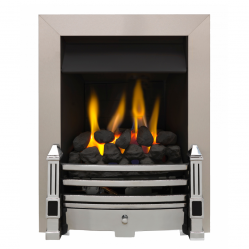Technical Details
| Product Title | Paragon 2000 Plus Manual Control Engine Only, N.Gas, Coal Effect |
|---|---|
| Product Keyword | Paragon 2000 Plus Engine, Manual Control Gas Fire, Natural Gas, Coal Effect Fire, Replacement Gas Engine |
| Energy Efficiency | F |
| Output (Nominal) | 3.6kW |
| Output (Maximum) | 4kW |
| Fuel | Gas - NG |
| Height | 554mm |
| Width | 372mm |
| Depth | 172mm |
| Nominal Output (Range) | 3kW - 5kW |
| Width (Range) | 300mm - 400mm |
| Nett Efficiency (%) | 56% |
| Style | Traditional |
| Chimney Type | Class 1 & 2 |
| Height (Range) | 500mm - 600mm |
Product Description
Paragon 2000 Plus Manual Control Engine – Natural Gas, Coal Effect
Experience the warm and inviting ambiance of a traditional fireplace with the Paragon 2000 Plus Manual Control Engine. Designed exclusively for use with natural gas, this unit is perfect for creating a cozy atmosphere in your home. The realistic coal effect adds a touch of authenticity to your fireplace.
- Model: Paragon 2000 Plus Manual Control Engine
- Fuel Type: Natural Gas (N.Gas)
- Realistic Coal Effect: Enjoy the traditional look of a coal-burning fire
- Control Type: Manual for easy operation
- High Efficiency: Optimize your heating and energy use
- Safety Features: Comes with standard safety protocols for peace of mind
- Installation: Suitable for a variety of fireplace openings
- Design: Sleek and unobtrusive, blends seamlessly with your decor
- Maintenance: Low maintenance requirements for hassle-free use
File Downloads
Reviews
Gas Fires > Gas Fires for a Class 2 Chimney

Gas Fires for a Class 2 Chimney
Class 2 chimneys are designed for use with gas or electric appliances, but never solid fuel (wood, coal or smokeless fuels). These can be prefabricated structures which are built up through the house in sections and terminate at the roof with a metal flue terminal or ridge vent or can be installed using a conventional gas flue system but in an existing or prefabricated chimney stack. Class 2 chimneys are commonly classed by the diameter- 5-inch diameter or under usually implies the chimney is class 2, whereas a diameter of 7 inches or more will imply the chimney is class 1. There are always discrepancies and exceptions with these two chimney classes in relation to fitting a gas fire, so if you are in any doubt, consult Document J of Building Regulations or refer to the manufacturer’s installation instructions or alternatively, get in touch with one of our expert advisors and we will be happy to assist.





